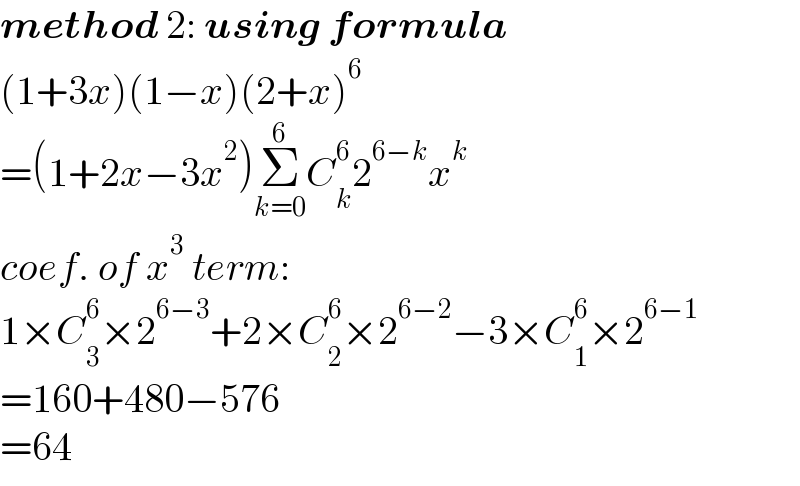
Question and Answers Forum
Previous in Permutation and Combination Next in Permutation and Combination
Question Number 177597 by cortano1 last updated on 07/Oct/22

Answered by mr W last updated on 07/Oct/22
![method 1: without using formula 1×1×C_3 ^6 ×2^3 +[1×(−1)+3×1]×C_2 ^6 ×2^4 +3×(−1)×6×2^5 =64](Q177608.png)
Answered by mr W last updated on 07/Oct/22

Commented by Tawa11 last updated on 09/Oct/22

